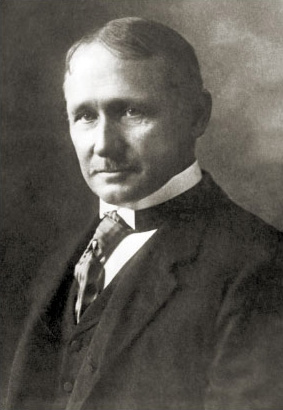1 The appliance of science
Many managment techniques are rooted in an approach to management that focuses on the careful control of tasks. Historically, this was referred to as ‘scientific management’ because it was felt that the manager's role was like that of a scientist, to control, or at least intervene in, processes in order to change them. For the ‘scientific’ manager, the desired change in these processes was an improvement in efficiency in the way in which they operated.
Scientific management (sometimes known as ‘Taylorism’ after its key founding figure, F.W. Taylor, Figure 1) started out as a way of managing the operations of an organisation, i.e. its main activities. F.W. Taylor (1856–1917) was a mechanical engineer who spent most of his working life in the US steel industry. He began his career as a labourer and rose to eventually become Chief Engineer for a large steel manufacturer, before finally becoming a freelance writer and consultant. Most of the companies he worked with were principally concerned with increasing production to meet the growing demands of the rapidly developing US economy.

In his study of 1911, Taylor developed the view that all jobs could be broken down into a set of narrowly defined tasks and activities, each of which should be made clear to the person in the job. Each of these tasks and activities should then be observed and timed accurately, with a view to identifying any obstacles to speed and efficiency. From this a ‘most efficient method’ of performing each task could be developed for the job and all other jobs in turn. Taylor's ideas, and in particular his focus on control and efficiency, took root in many developing manufacturing industries during the heyday of mass production in the first half of the twentieth century. The success of such business giants as the Ford Motor Company, an early convert to Taylor's methods, owes much to scientific management. Indeed, there are still many signs of Taylorism in contemporary organisations such as fast food outlets, call centres and theme parks, where job roles are fairly tightly defined and employees actions are carefully controlled. Efficiency is also still a very important aspect of management and working life. Nevertheless, modern management thinking is that efficiency, which is related to the speed and volume of output a process produces, needs to be balanced against effectiveness, or the quality of that output.
In the next section, we will spend some time considering how the ideas that have been highlighted so far fit together, before moving on to consider how you can use them in your own working context.
